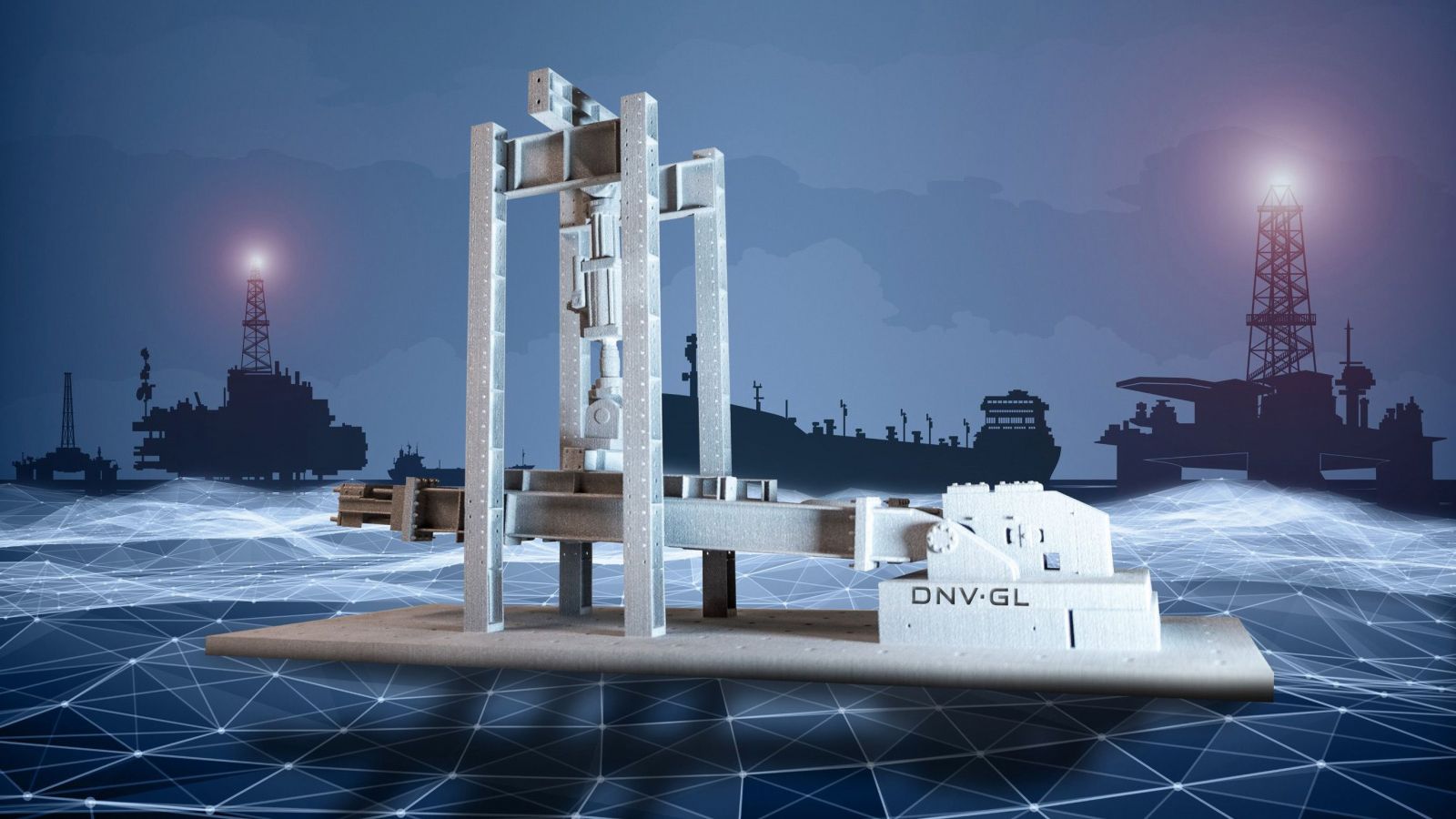DNV GL Launches First Class Guideline for Additive Manufacturing

DNV GL has published the first classification guideline for the use of additive manufacturing (AM) in the maritime and oil & gas industries. The guideline is designed to help manufacturers and sub-suppliers of materials, parts and components, service suppliers and end users adopting AM technologies, by ensuring that the parts or components created by an AM process and the materials from which they are created have the same level of quality assurance as traditionally manufactured products.
Additive manufacturing is a catch-all term for industrial processes that create three dimensional objects by adding layers of material. It includes such technologies as 3D Printing, Rapid Prototyping (RP), Direct Digital Manufacturing (DDM), layered manufacturing and additive fabrication.
“We have been investigating the potential of 3D printing for the maritime and oil & gas sectors since 2014,” says Marit Norheim, Vice President, Material Specialist, Hull, Materials & Machinery at DNV GL – Maritime. “With the introduction of the class guideline DNVGL-CG-0197, DNV GL is now ready to certify and support our customers and industry stakeholders to take advantage of this rapidly maturing technology. It will give end users confidence in the products and allow suppliers to offer their technologies and products for use in vessels and offshore installations.”
The latest AM processes allow printing in metal, something which is of particular importance to the maritime and oil & gas sectors. A variety of products and parts have now been successfully printed for industry, including screw pins, bearing shells, box heat exchangers and propellers.
“Additive manufacturing means products and components can be printed according to local needs, or even on board ships and offshore installations,” says Knut Ørbeck-Nilssen, CEO DNV GL – Maritime. “This equates to less lead time, less cost, less labour, less logistics, and less need to keep stocks of spare parts. AM can also be used for maintenance and repair, simply adding layers of material to worn components, thus negating the need to replace them.”
“AM parts that perform the same functions as those produced in traditional manufacturing environments must offer the same levels of quality assurance,” Norheim adds. “Similarly, the companies that have designed the parts must protect their intellectual property, so that customers can be sure they are receiving genuine products that are guaranteed fit for purpose. This is why this guideline is so important to all industry stakeholders.”
With the new guideline, DNV GL has created a clear pathway for AM certification and has the processes in place to assess every parameter that will impact upon the final products – from the material used, to a technology assessment, manufacturing procedure qualification, data transfer, and the actual printing and post processing.
The new DNVGL-CG-0197 guideline can be accessed here.
About DNV GL
DNV GL is a global quality assurance and risk management company. Driven by our purpose of safeguarding life, property and the environment, we enable our customers to advance the safety and sustainability of their business. Operating in more than 100 countries, our professionals are dedicated to helping customers in the maritime, oil & gas, power and renewables and other industries to make the world safer, smarter and greener.
About DNV GL – Maritime
DNV GL is the world’s leading classification society and a recognized advisor for the maritime industry. We enhance safety, quality, energy efficiency and environmental performance of the global shipping industry – across all vessel types and offshore structures. We invest heavily in research and development to find solutions, together with the industry, that address strategic, operational or regulatory challenges. For more information visit www.dnvgl.com/maritime.
The products and services herein described in this press release are not endorsed by The Maritime Executive.
